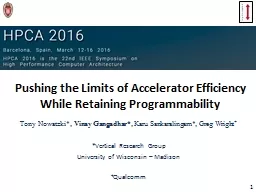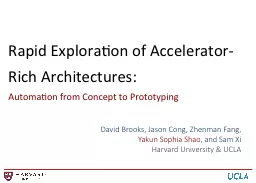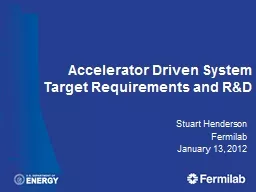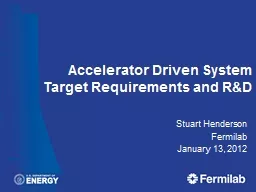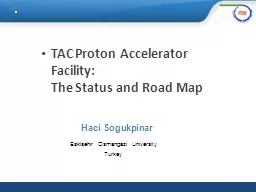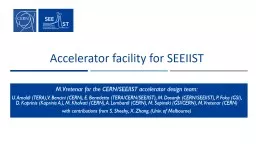PPT-Pushing the Limits of Accelerator Efficiency While Retaining Programmability
Author : laobeast | Published Date : 2020-08-06
Tony Nowatzki Vinay Gangadhar Karu Sankaralingam Greg Wright Vertical Research Group University of Wisconsin Madison Qualcomm 1 Executive Summary 5 common principles
Presentation Embed Code
Download Presentation
Download Presentation The PPT/PDF document "Pushing the Limits of Accelerator Effici..." is the property of its rightful owner. Permission is granted to download and print the materials on this website for personal, non-commercial use only, and to display it on your personal computer provided you do not modify the materials and that you retain all copyright notices contained in the materials. By downloading content from our website, you accept the terms of this agreement.
Pushing the Limits of Accelerator Efficiency While Retaining Programmability: Transcript
Download Rules Of Document
"Pushing the Limits of Accelerator Efficiency While Retaining Programmability"The content belongs to its owner. You may download and print it for personal use, without modification, and keep all copyright notices. By downloading, you agree to these terms.
Related Documents

